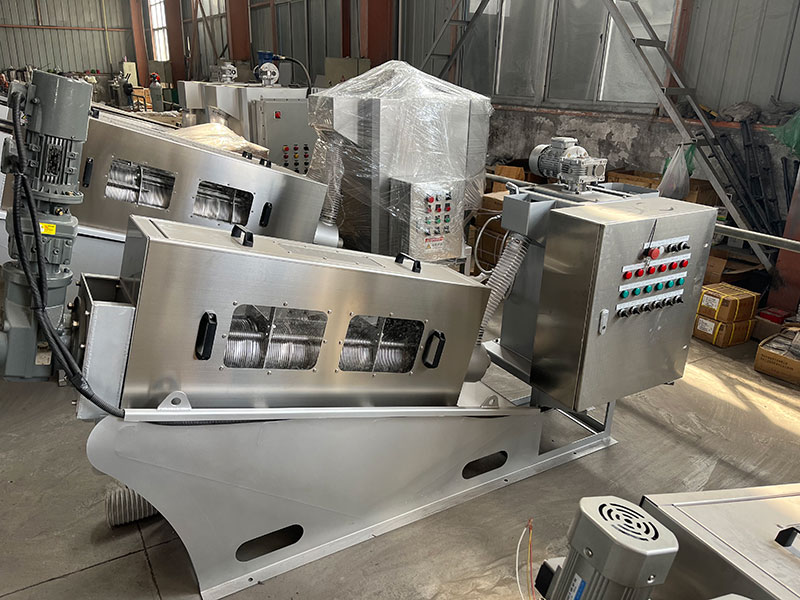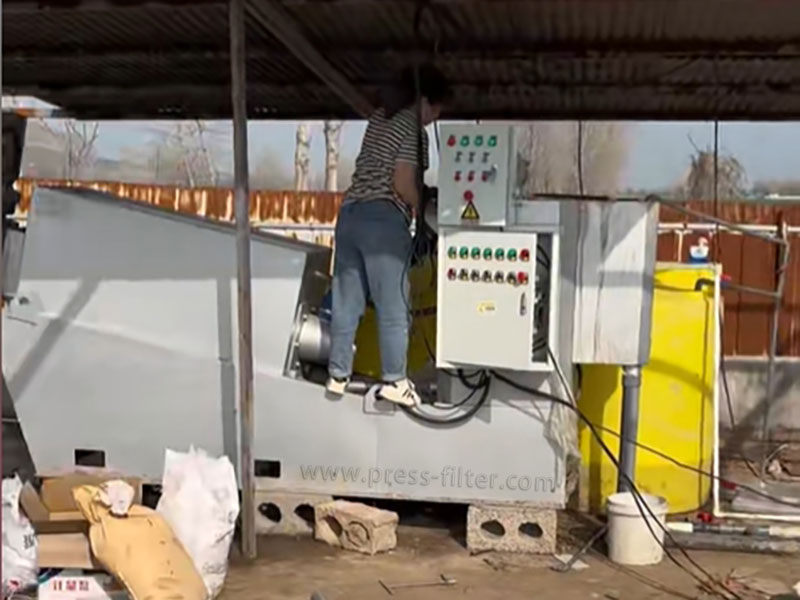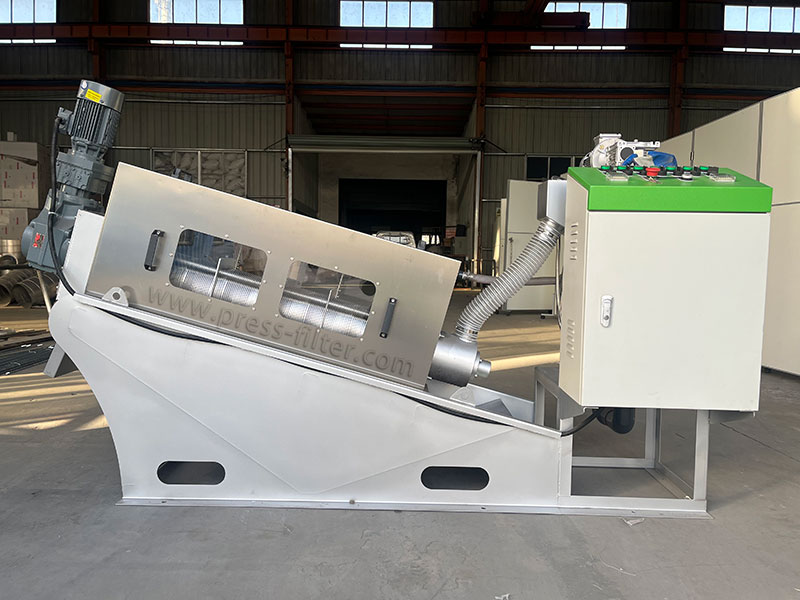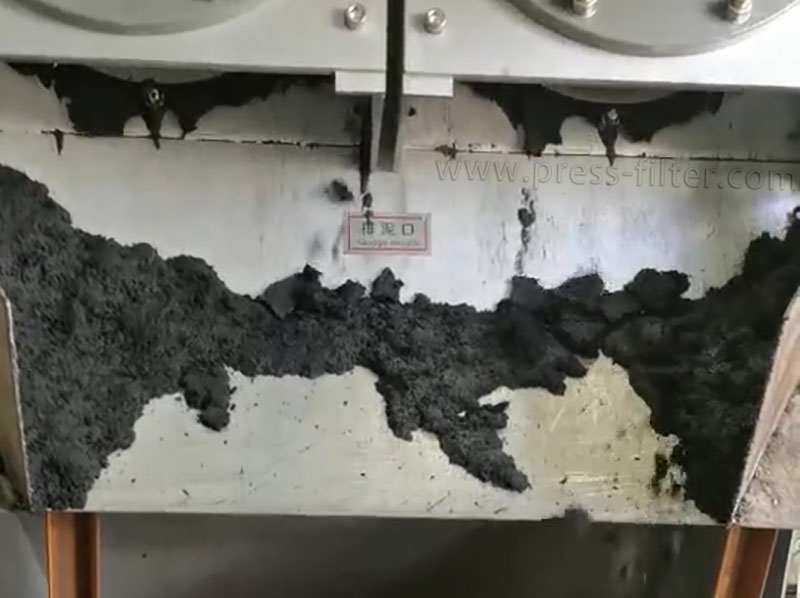Application of Screw Press in Pig Farm
The breeding industry occupies an important position in my country, especially pig breeding. Pork dominates the meat consumption of urban and rural residents. The annual pork production is more than 50 million tons. The domestic demand for pork is huge. At the same time, the entry threshold for pig breeding is relatively low, which puts great pressure on environmental protection. Therefore, the breeding wastewater needs to be treated and discharged after meeting the standards. The screw press is a sludge dewatering equipment widely used in the wastewater treatment process of animal husbandry, such as pig farms. Its unique structural design and efficient sludge treatment capacity make it play an important role in the treatment of manure and environmental protection in pig farms.
Characteristics of Pig Farm Wastewater
High organic matter content: Pig farm wastewater contains a large amount of organic matter, mainly from pig feces, urine, feed residues, and pig house flushing water. These organic substances exist in the form of protein, fat, carbohydrates, etc., which will cause the eutrophication of water bodies and affect the ecological environment.
High nitrogen and phosphorus content: Pig excrement is rich in nitrogen and phosphorus, which is an important factor causing the eutrophication of water bodies. If it is discharged without effective treatment, it will cause excessive reproduction of algae and seriously damage the water’s ecological balance.
High suspended matter: Pig farm wastewater contains a large amount of suspended matter, including feces, feed residues, animal hair, and mud and sand brought out during the flushing process. These high levels of suspended matter can easily cause water turbidity and increase the difficulty of subsequent treatment.
Why Choose a Screw Press?
With the increase in labor and feed costs, pig farming has entered a period of low profits, so the treatment of aquaculture wastewater should also reduce costs as much as possible. Common methods for treating aquaculture wastewater are filtration, sedimentation, and solid-liquid separation. Equipment such as grilles, flotation, and solid-liquid separators are required, and 2-3 sedimentation tanks need to be built. However, this is not only costly, but the water content of the filter cake after solid-liquid separation is too high, and the COD and ammonia nitrogen content in the water still exceed the standard, which does not meet environmental protection requirements.
The difficulty in treating sewage lies in its deep color, strong odor, and high organic content, which is exactly what the screw press can solve. After the aquaculture wastewater is flocculated, the organic matter and suspended matter in the sewage will flocculate into alum flowers. After the concentration and dehydration treatment of the screw press, solid-liquid separation is achieved. The filter cake with low water content can be used as organic fertilizer, and the filtrate basically becomes colorless and odorless water, meeting the secondary discharge standard.
Screw Press Application Process
Sludge flocculation
Before the wastewater enters the spiral stacker, it is necessary to add flocculants (such as polyacrylamide PAM) for flocculation treatment. The function of the flocculant is to aggregate the fine particles and organic matter in the wastewater into larger flocs (alum flowers) to facilitate the subsequent solid-liquid separation.
Concentration and dehydration
The flocculated sludge mixture is sent to the concentration section of the screw stack. The inside of the screw stack is composed of a spiral shaft, a fixed ring, and a floating ring. The sludge moves forward under the push of the spiral shaft. At this time, the water in the sludge passes through the gap between the ring pieces, is initially discharged under gravity, and enters the filtrate collection tank at the bottom of the equipment. In the concentration area, the sludge is slightly squeezed, the water is gradually discharged, and the sludge gradually becomes thicker. This stage mainly completes the initial solid-liquid separation, providing conditions for subsequent further dehydration.
Screw extrusion dehydration
The concentrated sludge is further pushed to the dehydration area by the screw shaft. Here, the pitch of the screw shaft gradually decreases, and the gap between the rings also becomes smaller, exerting a greater extrusion force on the sludge. The water in the sludge is squeezed out during the continuous extrusion process, forming a filtrate that flows out from the gap between the rings. Under the strong extrusion force, the solids in the sludge are compressed into filter cakes with low moisture content. The dehydrated filter cake is pushed to the discharge port by the screw shaft and discharged from the end of the equipment. Pig farm wastewater contains a large amount of organic matter and nutrients. These dehydrated filter cakes can be used as organic fertilizers to achieve resource utilization.
Conclusion
The process of treating pig farm wastewater with a spiral stacking machine is centered on flocculation, concentration, and extrusion dehydration. Through efficient solid-liquid separation, the organic matter and suspended matter in the wastewater are converted into usable filter cakes and qualified filtrate. This process not only improves the sludge dehydration efficiency and reduces the treatment cost but also realizes the resource utilization of wastewater.





